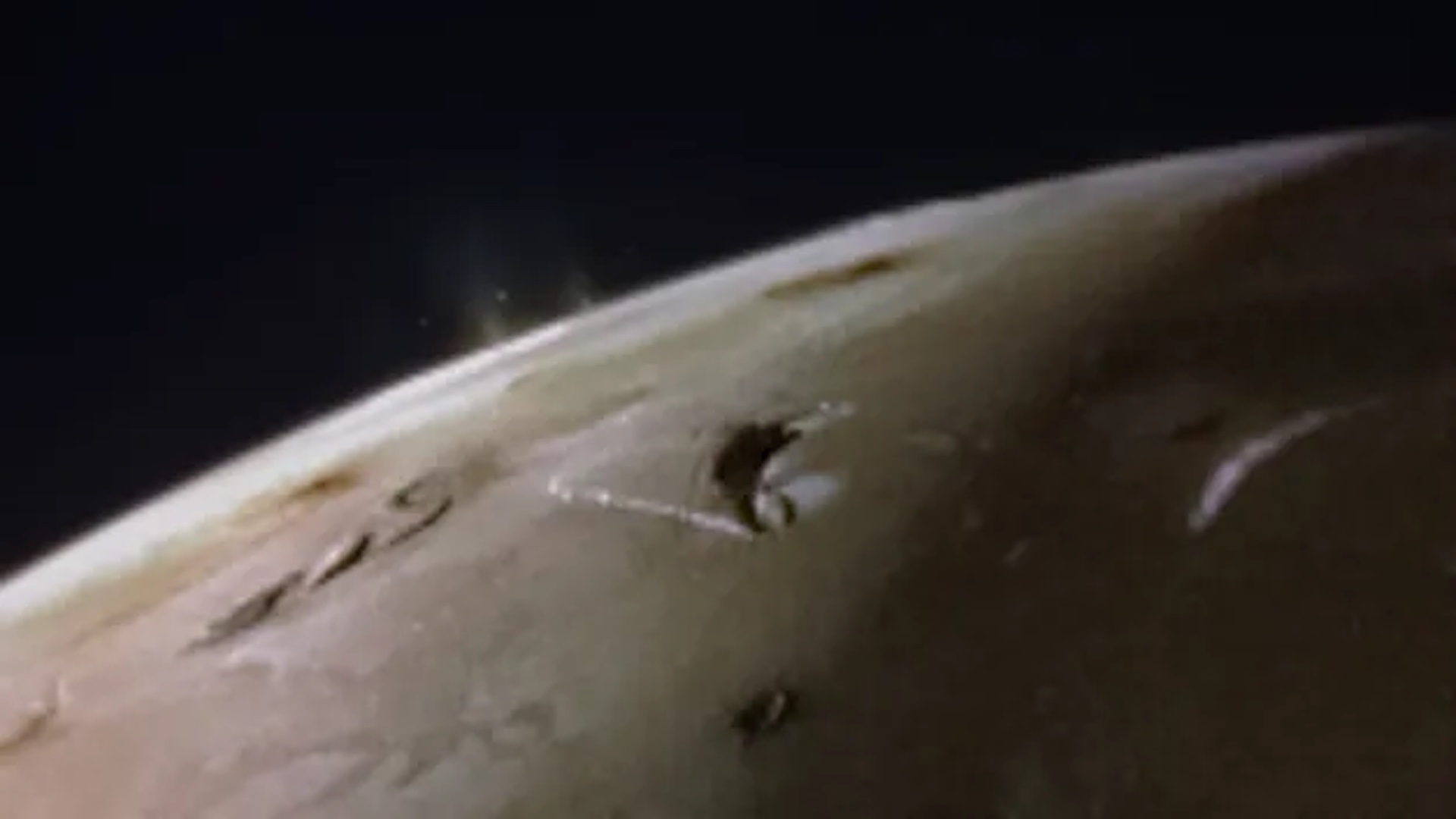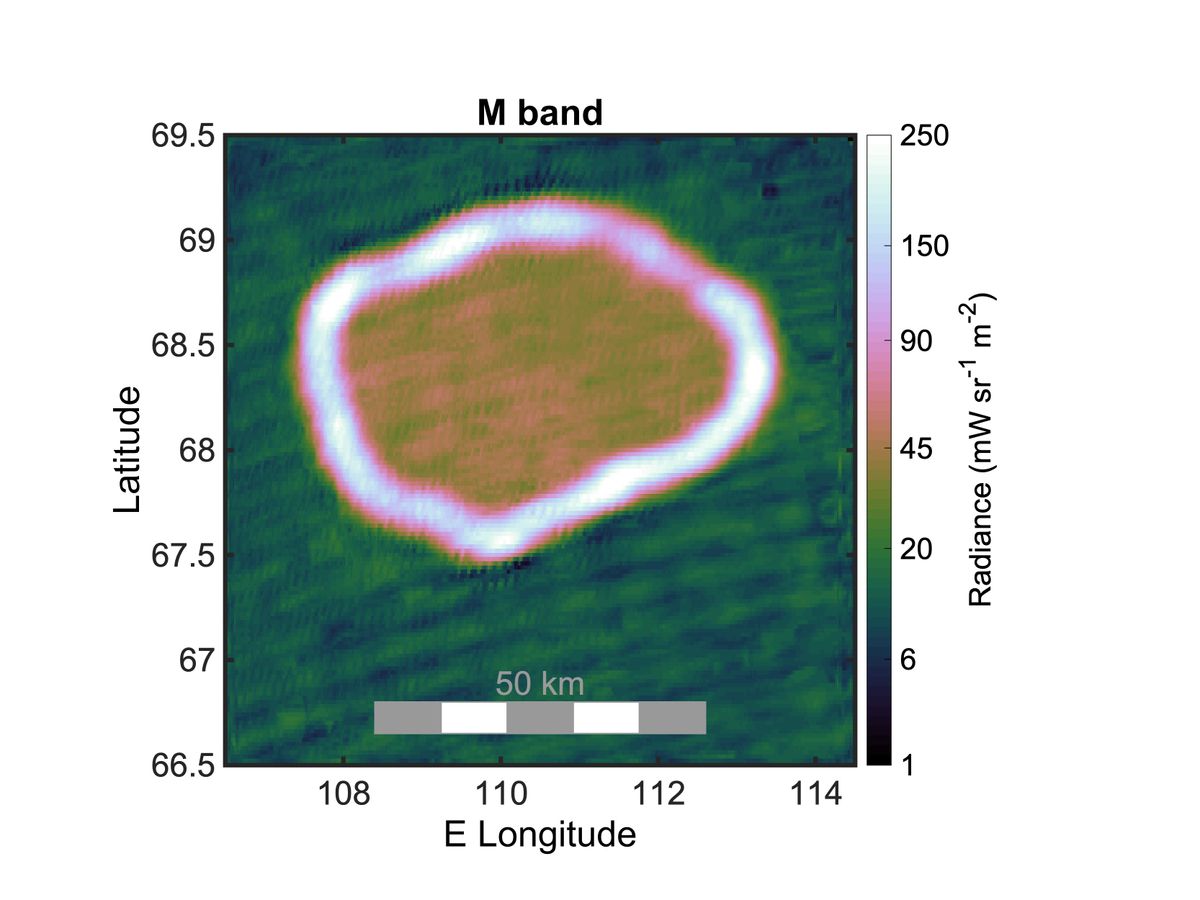NASA's Juno probe reveals 'fire-breathing' lava lakes across Jupiter's volcanic moon Io
New infrared images showcase "fire-breathing" lakes all across the surface of Jupiter's volcanic moon Io.

NASA's Juno mission might have originally been all about Jupiter, but its extended mission has the spacecraft observing the gas giant's moons — and it's making some pretty interesting discoveries. Its latest find? The Jovian moon Io is covered in "fire-breathing" lava lakes.
Using its Jovian Infrared Auroral Mapper (JIRAM) instrument, a project by the Italian Space Agency originally used to peer beneath Jupiter's thick clouds, Juno has captured infrared images of these lakes peppered across Io's surface, which show hot rings of lava surrounding a cooler crust. In the images, the rings are bright white with a thermal signature between 450 and 1,350 degrees Fahrenheit (232 and 732 degrees Celsius). The rest of the lake is much cooler, measuring at some minus 45 degrees Fahrenheit (minus 43 degrees Celsius).
"We now have an idea of what is the most frequent type of volcanism on Io: enormous lakes of lava where magma goes up and down," Alessandro Mura, a Juno co-investigator from the National Institute for Astrophysics in Rome, said in a statement. "The lava crust is forced to break against the walls of the lake, forming the typical lava ring seen in Hawaiian lava lakes."
The leading hypothesis is that magma undergoes upwelling in these lava lakes, causing the lakes to rise and fall. When the crust touches the lake's walls — which can be hundreds of meters tall — the friction causes it to break, exposing the lava along the edge of the lake.
RELATED: NASA reveals 'glass-smooth lake of cooling lava' on surface of Jupiter's moon Io
A secondary hypothesis suggests that magma wells up in the middle of the lake, pushing the crust outward until it sinks along the edge of the lake, again exposing the lava and forming those lava rings.
Researchers still have much to study on Io, particularly when it comes to Juno's infrared imagery. "We are just starting to wade into the JIRAM results from the close flybys of Io in December 2023 and February 2024," Scott Bolton, principal investigator for Juno at the Southwest Research Institute in San Antonio, said in the statement. "Combining these new results with Juno’s longer-term campaign to monitor and map the volcanoes on Io’s never-before-seen north and south poles, JIRAM is turning out to be one of the most valuable tools to learn how this tortured world works."
Get the world’s most fascinating discoveries delivered straight to your inbox.
Originally posted on Space.com.

Space.com contributing writer Stefanie Waldek is a self-taught space nerd and aviation geek who is passionate about all things spaceflight and astronomy. With a background in travel and design journalism, as well as a Bachelor of Arts degree from New York University, she specializes in the budding space tourism industry and Earth-based astrotourism. In her free time, you can find her watching rocket launches or looking up at the stars, wondering what is out there. Learn more about her work at www.stefaniewaldek.com.




